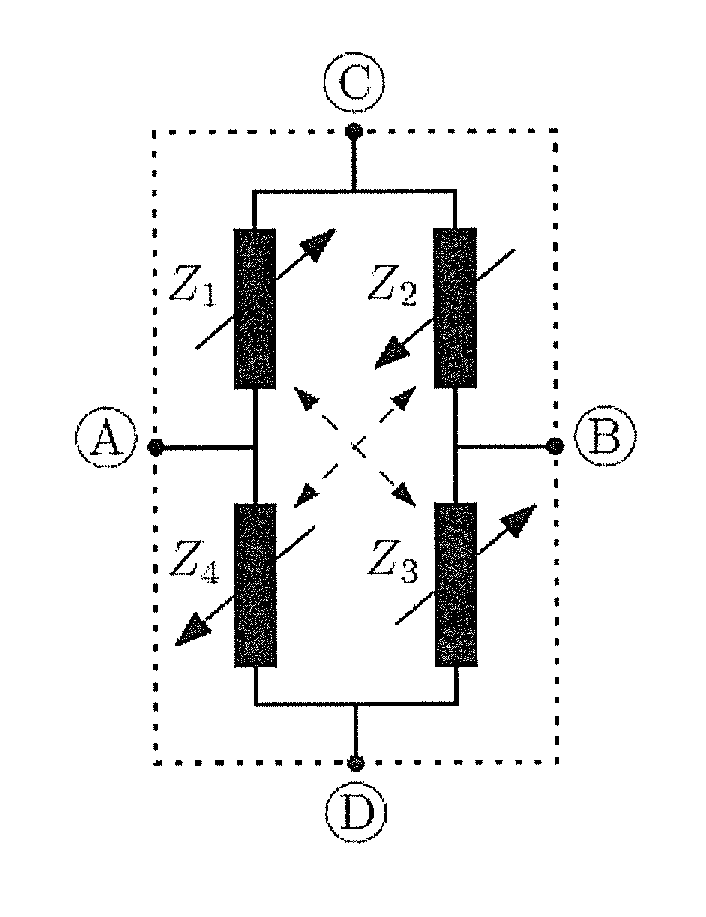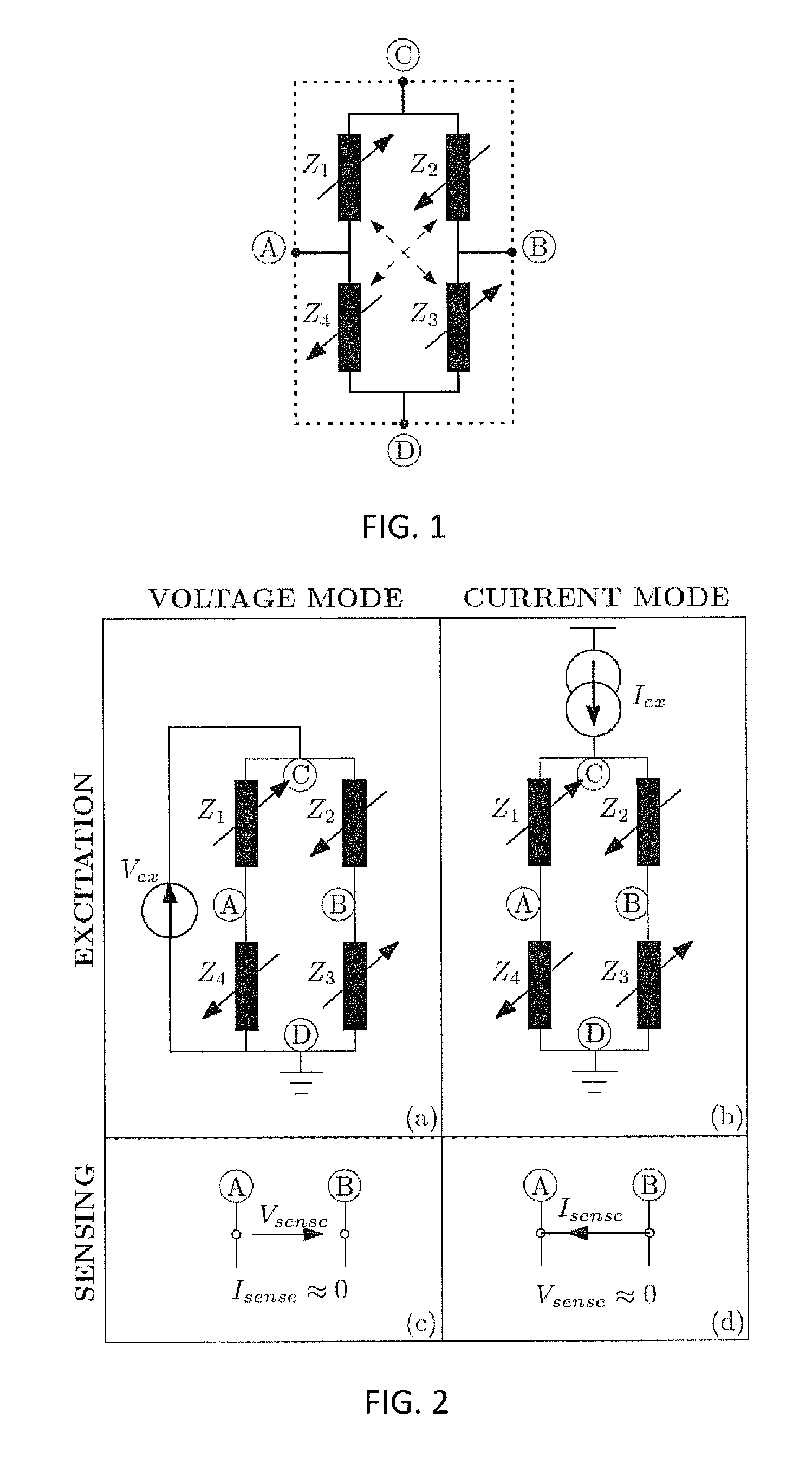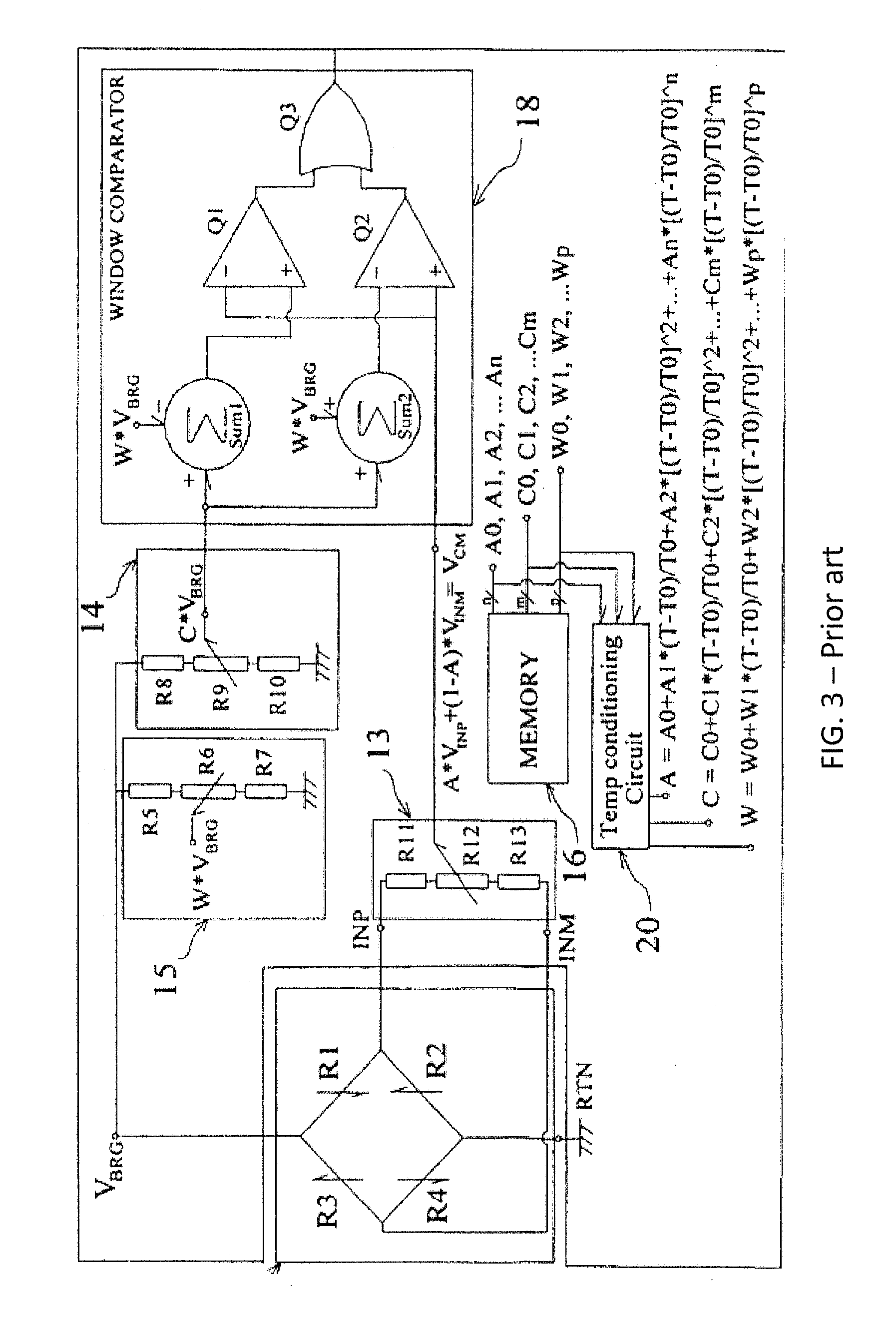Sensor readout with redundancy-checking
a technology of readout circuit and readout circuit, which is applied in the direction of electrical/magnetically converting sensor output, instruments, force measurement, etc., can solve the problems of increasing the overall cost, reducing a single sensor already showing internal redundancy, etc. problem, to achieve the effect of increasing the reliability of the overall sensor system, maximizing and little prior-art in exploiting the internal redundancy of the sensor
- Summary
- Abstract
- Description
- Claims
- Application Information
AI Technical Summary
Benefits of technology
Problems solved by technology
Method used
Image
Examples
Embodiment Construction
[0060]An impedance bridge configuration is a very general topology for a sensor unit, including resistive bridges, capacitive bridges or bridges comprising other types of frequency-dependent bridge elements. In FIG. 1, a general impedance bridge is illustrated, comprising four impedances (Z1, Z2, Z3, Z4). It is assumed that the sensor unit has internal redundancy, and that the pairs Z1|Z3 and Z2|Z4 are matched under normal conditions. Apart from this matching property, the impedances are considered general. This includes resistive bridges (FIG. 5), capacitive bridges (FIG. 6), etc. For resistive bridges, the impedance relation becomes Zi=Ri, with Ri the variable resistances of the sensor unit. For capacitive bridges, the impedance relation becomes
Zi=1jωCi,
where Ci are the variable capacitances of the sensor unit. Also inductance-based bridges (having impedances Zi=jωL1) can be included in embodiments of the present invention (not illustrated in the drawings). In its most general for...
PUM
 Login to View More
Login to View More Abstract
Description
Claims
Application Information
 Login to View More
Login to View More - R&D
- Intellectual Property
- Life Sciences
- Materials
- Tech Scout
- Unparalleled Data Quality
- Higher Quality Content
- 60% Fewer Hallucinations
Browse by: Latest US Patents, China's latest patents, Technical Efficacy Thesaurus, Application Domain, Technology Topic, Popular Technical Reports.
© 2025 PatSnap. All rights reserved.Legal|Privacy policy|Modern Slavery Act Transparency Statement|Sitemap|About US| Contact US: help@patsnap.com



